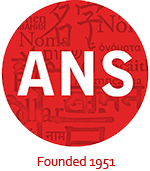Dr. Cleveland Evans writes about names for the Omaha World-Herald. In his November 21st column, he looks at the history of the name Claire.
On Tuesday, we learn how Claire gets through the Revolution.
“Go Tell The Bees That I Am Gone”, the ninth book in Diana Gabaldon’s “Outlander” series, will be released Nov. 23. In 1991, “Outlander” introduced readers to Claire Randall, an English nurse who time-travels from 1945 to 1743’s Scotland. In “Bees,” it’s 1779 and Claire’s married to Highlander Jamie Fraser. They’re now settlers in backwoods North Carolina, menaced by both sides in the Revolutionary War.
In 2018, “Outlander” was second to “To Kill A Mockingbird” in PBS’s “Great American Read” contest. Caitriona Balfe has played Claire in Starz’s “Outlander” series since 2014.
Claire is the French form of Clara, feminine of Latin Clarus, “clear.” Two early male saints were named Clarus. Clare first appears as an English female name around 1200. After 1300, veneration of St. Clare of Assisi (1194-1253), Italian founder of the Poor Clares nuns, made it more common.
Clare was eclipsed by Latin Clara after 1750. 1850’s United States Census found 13,349 Claras and only 90 female Clares and 74 Claires, with 58 Claires born in France or French-influenced Louisiana.
That census found 225 males named Clair, Clare, or Claire. Clare was a nickname for Clarence, and also came from surnames Clair and Clare, sometimes derived from English place names or “clayer,” a medieval term for “plasterer.”
